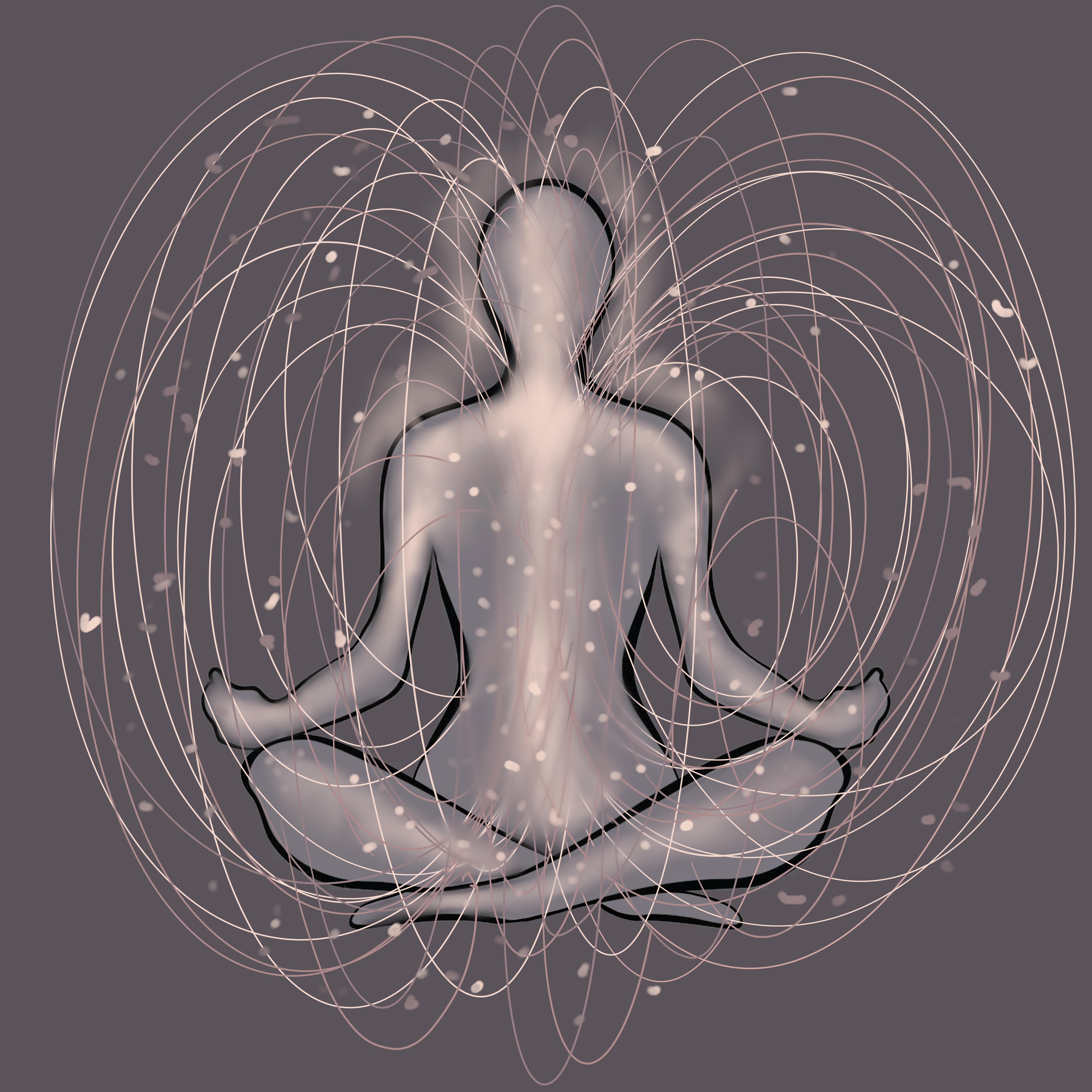Inhabiting The Body

IMAGE OF THE WEEK
We are grateful to Rupali Bhuva for offering this hand-made painting for this reading.

To live within the body is to be in contact with the internal space of the body. To inhabit our hands, for example, means that we are in contact with the whole internal space of our hands. To be in contact everywhere in our body produces an experience of internal wholeness, a unified ground of being.
This contact is consciousness. When we inhabit our body, we feel that our consciousness is everywhere in our body. This is a tangible experience. We feel that we are made of consciousness. This is a shift from knowing ourselves abstractly, from having an idea about who we are that may change in different circumstances, to embodying an unchanging, non-conceptual ground of consciousness. As the embodiment of unitive consciousness, we know our basic identity experientially, rather than conceptually.
Inward contact with one’s body is at the same time inward contact with our human capacities. For example, inward contact with the internal space of one’s neck is contact with one’s voice, one’s potential to speak. If we constrict our neck and limit our ability to live within it, we limit the use of our voice. Inward contact with the internal space of one’s chest is contact with one’s capacity for emotional responsiveness. When we constrict and limit our embodiment of our chest, we also limit the depth and fluidity of our emotional responsiveness. For this reason, inhabiting the body is crucial for recovering from early psychological wounding. For it is these innate capacities of our being that we constrict in reaction to overwhelmingly painful or confusing events in our lives.
We cannot suppress either our perception of the world around us, or our own responses to it, except by clamping down on our own body. For example, we cannot keep from crying, except by tightening the muscles in our chest, neck, and around our eyes. We cannot shut out the sound of our parents fighting, except by tightening the anatomy of our hearing. For this reason, we cannot recover ourselves, the depth of our emotional responsiveness, for example, or the acuity of our senses, without freeing ourselves from these bodily constrictions.
These rigid somatic configurations obstruct our ability to inhabit the internal space of the body. They therefore diminish our experience of contact with ourselves and others, and limit both our internal coherence and our capacity for intimacy. In the Realization Process, the process of accessing and finally inhabiting the internal space of our body facilitates our ability to discern and release these constrictions and regain the freedom and depth of our innate capacities.
As an antidote to the denial of our reality that is often an aspect of childhood trauma, the free flow of our experience through the unchanging ground of our being can help us to know what we really feel, really perceive, really know.
As the embodiment of unitive consciousness, we experience no distinction between our body and our being. We experience that we are the internal space of our body. Unitive consciousness is experienced as stillness. But it is not emptiness; it is not hollow. It feels like our own presence. It feels like the deepest, most direct contact that we can have with our own being.
Excerpted from here.
SEED QUESTIONS FOR REFLECTION: What does inhabiting the body mean to you? Can you share a personal story of a time you were able to see the connection between your perception and your physiological process? What helps you maintain inward contact with your human capacities?